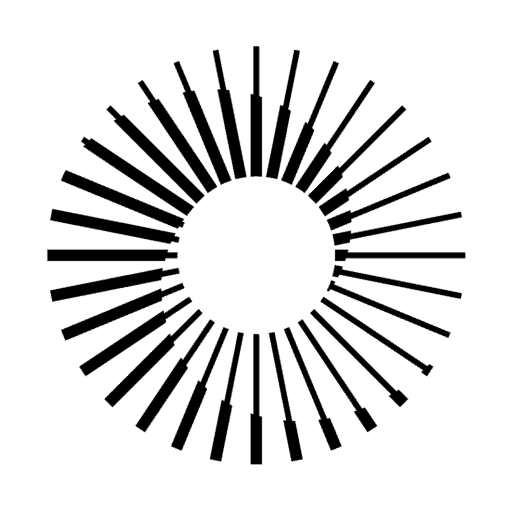In the ever-evolving landscape of healthcare technology, the Vendor Neutral Archive (VNA) has emerged as a cornerstone solution—revolutionizing the management and accessibility of medical imaging data.
📖 Author: Emmanuel Anyanwu | Alberta Health Services, Canada
Vendor Neutral Archive (VNA) stands as a beacon of innovation, offering a transformative solution to the challenges associated with traditional Picture Archiving and Communication Systems (PACS).
A Vendor Neutral Archive represents a sophisticated storage solution designed to harmonize and centralize medical imaging data from various sources, irrespective of vendor or format.
Unlike conventional PACS, which are often proprietary and limited to specific vendors or modalities, VNAs provide a vendor-agnostic platform—facilitating seamless integration and interoperability across diverse healthcare systems and imaging technologies.
Vendor Neutral Archive Applications
The versatility of VNA extends across various facets of healthcare delivery, offering a myriad of applications including:
- Centralized image storage: VNAs serve as centralized repositories for storing and archiving medical images, such as X-rays, MRIs, CT scans, and ultrasounds, eliminating the need for fragmented storage silos and facilitating streamlined access to patient data.
- Interoperability: By supporting industry-standard formats and communication protocols, VNAs promote interoperability between different healthcare systems, such as PACS, electronic health records (EHRs), and imaging modalities, enabling seamless data exchange and collaboration across healthcare networks, regardless of the vendor or technology platform. Thus, fostering continuity of care and enhancing clinical workflows.
- Data consolidation & management: VNAs serve as centralized repositories for storing, managing, and archiving medical imaging data—eliminating the need for fragmented storage silos and redundant infrastructure. This consolidation streamlines data management processes, reduces administrative overheads, and optimizes storage resources, ultimately enhancing operational efficiency and cost-effectiveness.
- Disaster recovery & business continuity: VNAs incorporate robust backup and disaster recovery mechanisms—ensuring the resilience of medical imaging data in the face of unforeseen events such as natural disasters, hardware failures, or cyber-attacks. This capability safeguards critical patient information and maintains continuity of care, even in the most challenging circumstances.
- Long-term archiving & retention: VNAs address the growing need for long-term archiving and retention of medical images, adhering to regulatory requirements and best practices for data preservation. Advanced features such as data deduplication, encryption, and lifecycle management optimize storage resources while ensuring data integrity and compliance.
Advantages of Vendor Neutral Archives
The adoption of VNA offers several compelling advantages for healthcare organizations, including:
- Flexibility & scalability: VNAs provide a flexible and scalable platform capable of accommodating the ever-growing volume of medical imaging data generated by modern healthcare facilities. Organizations can scale storage resources dynamically to meet evolving clinical and operational needs without disruption or downtime.
- Cost efficiency: By consolidating disparate image archives into a single centralized repository, VNAs eliminate redundancy and inefficiencies associated with managing multiple PACS systems. This consolidation not only reduces hardware and maintenance costs but also streamlines administrative overheads, optimizing the total cost of ownership.
- Enhanced data access & mobility: Vendor Neutral Archives empower clinicians to access medical imaging data securely from any location, at any time, using standard web browsers or mobile devices. This accessibility promotes real-time collaboration, remote consultations, and expedited clinical decision-making—ultimately improving patient outcomes and satisfaction.
- Vendor-agnostic interoperability: Unlike proprietary PACS solutions, VNAs support open standards and industry best practices, enabling seamless integration with existing healthcare IT infrastructure and third-party applications. This vendor-agnostic approach facilitates interoperability, future-proofing investments, and minimizes dependencies on specific vendors or technologies.
Difference between VNA & PACS
While both VNA and PACS are integral components of medical imaging informatics, they serve distinct roles within the healthcare ecosystem:
- Functionality: PACS primarily focuses on image acquisition, storage, and distribution within a single healthcare institution or department. In contrast, VNAs offer broader capabilities, encompassing data consolidation, interoperability, long-term archiving, and seamless data exchange across disparate systems and organizations.
- Vendor neutrality: PACS solutions are typically vendor-specific, designed to work exclusively with hardware and software components from the same vendor. In contrast, VNAs adhere to vendor-neutral principles, supporting interoperability between multiple vendors and imaging modalities, fostering collaboration, and reducing vendor lock-in.
- Data retention: While PACS are optimized for short-term storage and immediate access to recent imaging studies, Vendor Neutral Archives specialize in long-term archiving and retention of medical imaging data, ensuring compliance with regulatory requirements and enabling retrospective analysis and research.
In essence, while PACS remain essential for day-to-day clinical workflows and image management, Vendor Neutral Archives complement these systems by providing a centralized, vendor-agnostic platform for data consolidation, interoperability, and long-term archiving—driving efficiency, collaboration, and innovation in healthcare delivery.
In conclusion, the adoption of Vendor Neutral Archives represents a paradigm shift in the management and accessibility of medical imaging data, offering healthcare organizations unparalleled opportunities to streamline operations, enhance interoperability, and improve patient care outcomes.
By embracing the principles of vendor neutrality, scalability, and interoperability, VNAs empower clinicians to harness the full potential of medical imaging informatics—driving innovation and excellence in healthcare delivery.
As healthcare continues to evolve, VNAs will remain indispensable tools, enabling organizations to navigate the complexities of modern medicine with confidence, agility, and compassion.
—
Do you work with a Vendor Neutral Archive? Share your thoughts via the comment section below.
Want to join a great team? Check out our careers section. We are always looking for outstanding talent—from application specialist to software developers.
📷 Photo credits: daniela-mueller.com


